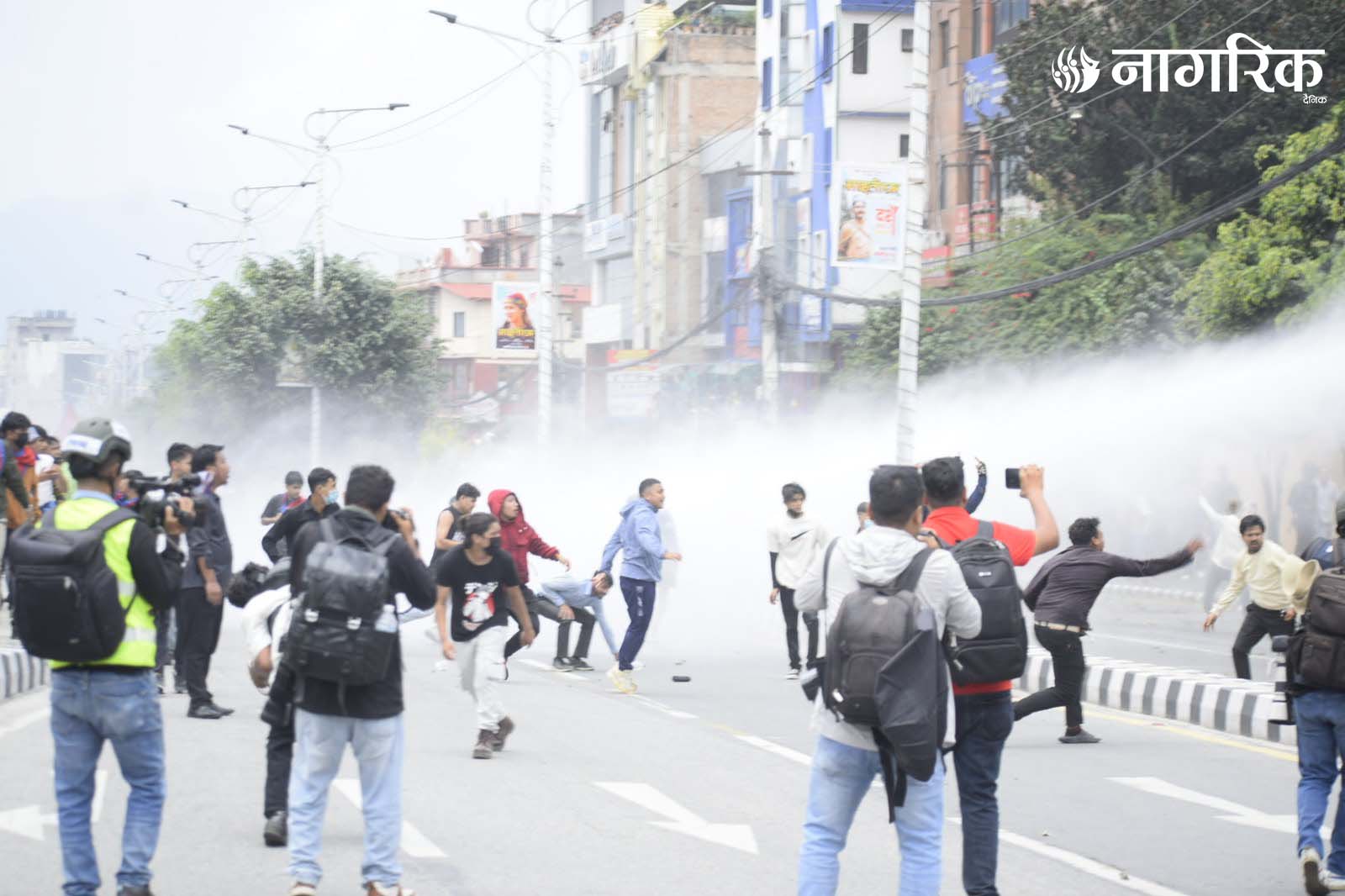The ideas outlined in a recently published monograph titled ‘Addressing U.S.-China Strategic Distrust’ deserve a serious and sustained discussion and should be taken into account by analysts and policy makers of Nepal while planning the country’s foreign policy strategy for the next few decades. As the two authors of the paper --- Kenneth Lieberthal and Wang Jisi --- argue, the issue of mutual distrust of long-term intentions or ‘strategic distrust’, “has become a central concern in US-China relations” and “the problem of lack of trust is becoming more serious”. It is obvious that a strategically situated state like Nepal will undoubtedly be affected by the geo-political maneuverings of two of the world’s largest economies.[break]
For China, it is natural and obviously desirable to seek a more broad-based engagement with Nepal with which it shares a boundary of more than a thousand kilometers and historical relations spanning hundreds of years. But in the context of heightening strategic distrust between the United States (US) and China, it is worthwhile to analyze the manner in which the US perceives expanding Sino-Nepal relations. This question is particularly relevant in light of the recent American ‘pivot to Asia’ and President Barak Obama’s affirmation that the US will play a key leadership role in Asia for decades to come. The question is also pertinent in light of the fact that the “type of China envisaged by current predominant American official thinking is one that will have a significant impact regionally and globally but will not target its increasing capabilities specially to diminish and disadvantage the United States.”

The authors of the monograph rightly note that there is no bilateral relationship in the world more crucial today than that between the US and China, and “thus its future direction is of enormous importance to each country, the region, and the whole world...[and for] regional and global issues such as non-proliferation and climate change, active US-China cooperation or at least parallel actions makes issues more manageable; having the US and China work at cross purposes makes those issues more difficult, or even impossible, to manage.”
Given this backdrop, it would be fair to question how Nepal conceptualizes the future direction of Sino-US relations and what it can do to prevent these two states from working at cross-purposes and contradiction within its territory. Nepal can propose a number of mechanisms to encourage collaboration between the US and China, two of its key development partners. This would not only help mitigate any potential negative consequences within Nepal arising out of distrust between these two states but would also ensure effective distribution of limited resources to a cash-strapped nation. Incidentally, in the case of Arica, discourse on US-China collaboration is already rather well enunciated.
Any perceptive observer would note that Nepal’s key global geo-strategic function at this point is mainly related to two issues – one, the extension of the Tibet railway into Nepalese territory and second, how that will promote the notion of Nepal being a corridor par excellence to build a meaningful and harmonious Nepal-China-India trilateral relationship. This will provide Nepal a distinct opportunity to transform itself economically in line with the deep political changes witnessed in the last few years. How will the US respond to these two issues? Will it encourage such developments in view of its preoccupations with Tibet?
The question assumes great relevance considering that the US is still the paramount economic and military power in the world, to which it can be added that it was Nepal’s first bilateral aid donor in 1951 and has continued to provide millions of dollars of assistance ever since. However, as many analysts have pointed out and as Wang Jisi also explains in the monograph, “Beijing sees the lack of confidence and competence of the United States on the global stage...[and the] power gap between China and the US has narrowed considerably. ..It is now a question of how many years, rather than how many decades, before China replaces the United States as the largest economy in the world.” As the balance of power between the two most powerful countries in the world is witnessing a re-adjustment, it would be prudent for Nepal to contemplate ways in which it can bring the two together to enable its own development and promote regional growth and stability.
A 2006 Congressional Research Service Report for the United States Congress stated, “American foreign policy interests in Nepal seek to prevent the collapse of Nepal which, should it become a failed state, could provide operational or support territory for terrorists.” A great deal has changed in the last six years and Nepal now appears poised to enter a period when it can shift its focus from political to economic transformation. A major part of that economic transformation is connected to the intensity with which Nepal pushes forward its under-utilized relationship with China, particularly large cross-border infrastructure projects and ultimately, promotion of a Nepal-India-China trilateral relationship. The US should support both these endeavors and likewise, Nepal should seek to involve the US in meaningful and appropriate ways to advance these two critical agendas.
To begin with, Nepal should persuade the United States to use its considerable influence in multilateral and international organizations such as the UN and World Bank to help it seek a more global role for itself. This can be done by effectively promoting development efforts geared at consolidating the trilateral relationship mentioned above and encouraging the construction of Nepal-China cross-border infrastructure projects that allow Nepal greater access via rail to the most populated country in the world and further to Southeast Asia, East Asia, Central Asia and so on.
The US could greatly assist with this, for example, by taking the lead at the United Nations Economic and Social Commission for Asia and the Pacific (UNESCAP) and proposing that the current route map of the Trans-Asian Railway Network be updated to include a proposed segment linking Kathmandu to not only New Delhi but also Lhasa.
Two, replicate the case of Africa where both the United States and China have separately helped African countries to improve their agricultural productivity and market access but have recently been exploring the possibility of undertaking joint agricultural assistance projects. In the case of Nepal it may be proposed, for example, that the USAID’s concerns related to low agricultural productivity in food-deficient Nepal which also happens to be seriously hampered by poor market access, can be addressed by collaborating with Chinese highway and railway expansion projects across the Sino-Nepal border. This would help address the shorter term issue of food security in Nepal while tackling long term concerns about expanding access for agricultural products from Nepal in China. For the United States, such efforts would portray a constructive depiction of its global role.
Finally, since “one central issue in the US-China distrust” is about the perceived “power struggle” and “power competition” between the two states in the world, particularly in the Asia-Pacific region”, the authors of the monograph suggest that the US and China create “more comprehensive and effective mechanisms for them to discuss sensitive geostrategic issues in multilateral settings.” Future US support to the evolving India-China-Nepal trilateral relationship and particularly to a future rail line linking the three countries, for instance, could possibly be discussed within the existing US-China-India trilateral dialogue
The author is a PhD. Student at the School of International Studies, Peking University
(Citations in this article, unless otherwise mentioned, are drawn from the monograph ‘Addressing U.S.-China Strategic Distrust)
bhaskar.koirala@gmail.com
5 Common myths about common cold and flu (with video)
























